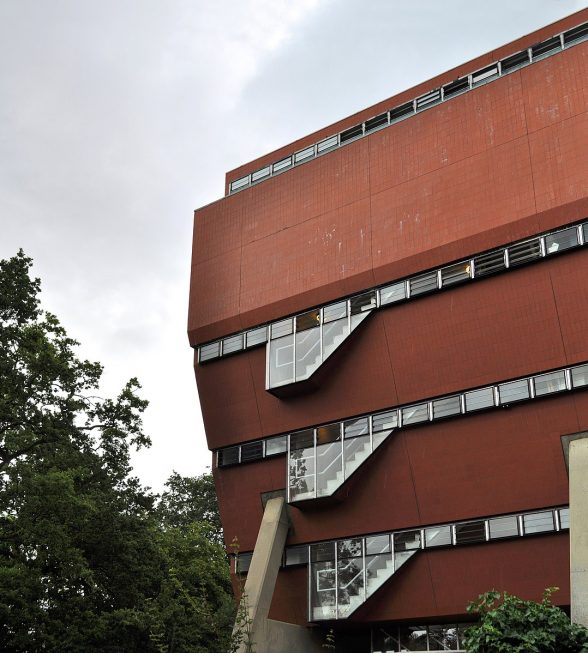This website uses cookies
This website uses cookies to enable it to function properly and to analyse how the website is used. Please click 'Close' to accept and continue using the website.



I decided to apply for the Caseworker position after I saw it advertised on Twitter — I’ve been interested in 20th-century architecture for a while now, and I’ve always admired the Society’s work as an educator and campaigner for the conservation of buildings built post-1914.
To my surprise and delight, I was invited for a Zoom interview with Catherine, the Society’s Director; Clare, the Head of Casework; and David Heath, Chair of the Casework Committee. In the interview, I was shown a variety of 20th-century buildings—including the classical 1930s house, 22 Weymouth Street, by Adrian and Giles Gilbert Scott; James Stirling’s striking Florey Building, student residences built in the 1960s; and the refined 1950s Civic Centre 2 built to designs by George Sealy working under Coventry’s City Architect, Arthur Ling—which were all cases the Society had been involved with in the past.

Coco Whittaker
My second interview took place at Denys Lasdun’s IBM Building on London’s Southbank, then the subject of an application proposing substantial and harmful extensions and alterations which took little account of its Grade II status, recently secured by the Society.
I was beyond pleased to be offered the Caseworker role in September, and I started the job on Monday 19th October. Two weeks in, I am having a great time — while demanding, the work is both engaging and hugely rewarding, and I am thoroughly enjoying working with the C20 Society team. Everyone has been very welcoming and patient when it comes to answering my (many!) questions.

Seier+Seier
So far, I’ve been involved in some really interesting projects. I’ve written lots of letters to councils objecting to schemes that harm prominent 20th-century buildings, I’ve accompanied Catherine on a site visit (my first), and I’ve carried out research into buildings that the Society believes are eligible for listing.
One high-profile case I’ve worked on is The Shirehall, the headquarters of the Shropshire Council which was built in the 1960s to designs by the County Architect Ralph Vernon Crowe. Described by Nikolaus Pevsner in his guide to Shropshire’s buildings as “‘The major monument to post-war Modernism in the county”, The Shirehall stands in the county town of Shrewsbury where, it so happens, I was born. The building has been turned down for inclusion on the National List and an application submitted for a Certificate of Immunity (COI) from listing which, if granted, would make it vulnerable to demolition. I was tasked with writing a letter requesting a review of the decision not to list and objecting to the approval of the COI. It would be a huge shame if The Shirehall is bulldozed, and its loss would be felt not only by Salopians but by people all over the country.
I am so looking forward to working with the Twentieth Century Society’s staff, volunteers and members in the future, and hope I can make a positive contribution to the status and position of 20th-century architecture in Britain.

Become a C20 member today and help save our modern design heritage.
Comments